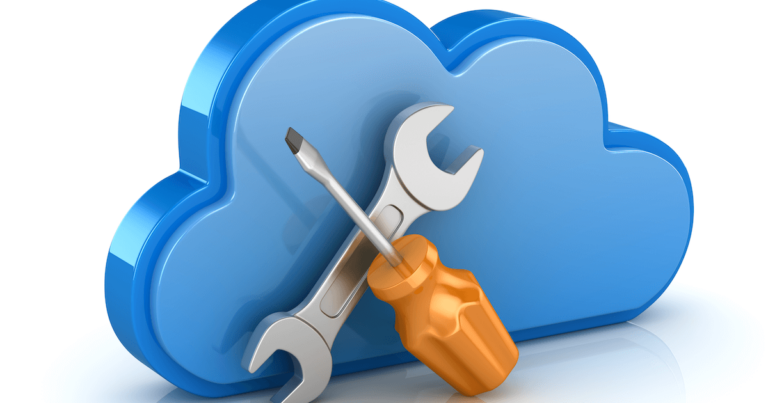With flexible pricing and availability of on-demand infrastructure, cloud computing accommodates any demand of new and enterprise-level companies. Cloud solutions are deployed and used for all application environments, including developer, testing, and production. As expected, a considerable amount of data is being generated, adding to the complexity of managing them.
All data needs to be tracked, measured, and watched to ensure the optimum health of the application infrastructure. To solve the problem, cloud providers such as AWS and Microsoft Azure both offer monitoring services, allowing you to keep track of all movement within your account. Both cloud providers provide built-in monitoring solutions such as Amazon CloudWatch and Azure Monitor.
Understanding the difference between these is a second thing. First, it’s essential to know why exactly cloud monitoring is needed. Then, we will dig deep into native Azure and AWS tools and explore the unique features both platforms offer. Let’s start the blog by developing some understanding of what is cloud monitoring and why it is essential?
What Is Cloud Monitoring?
Cloud monitoring is a set of practices used to track cloud services and applications’ performance, security, and availability. Monitoring helps optimize infrastructure, identify service outages, and detect vulnerabilities or threats within an account. There are three primary reasons cloud monitoring is helpful such as:
- Performance monitoring allows you to keep track of resources and services for their availability, ensuring user expectations or workload requirements are met. Moreover, it helps you identify bottlenecks or insufficient resources, enables you to optimize configurations, and addresses application errors.
- Security monitoring ensures that access to data, accounts, and applications is secure and that infrastructure and applications stay updated. Setting the highest standards for security and continuous monitoring to ensure compliance standards, identify cyber threats, and track malicious activity.
- Cost monitoring enables you to keep track of all resources used efficiently or underutilized and even the ones that are forgotten and moved to unused capacity. This way, it becomes easy to optimize and modify the cost of resources used, which are running and put to idle or stop.
What is Azure Monitor?
Azure Monitor is the native monitoring solution offered by Microsoft for Azure services. If you are a user of Azure, it is collecting data for you in the background. Azure Monitor collects metrics and logs related to your Azure resources and uses the data to create alerts, monitor performance, troubleshoot issues, and develop insights-rich dashboards to provide complete visibility of the Azure estate for decision making, especially when problems arise.
There are several ways the collected metrics or data can be used, such as detecting and diagnosing issues across apps and dependencies with application insights. You can drill down to the monitoring data with Log Analytics for troubleshooting and deep diagnostics. The same set of data is used to create visualizations with Azure dashboards and workbooks to access the application’s state in a more simplified way. It also allows you to correlate infrastructure issues with VM insights and container insights.
Azure Monitor then organizes the data it collects for monitoring into two types: metrics and logs.
- Metrics: Metrics logs provide visualized metrics based on subscription resource groups and resource type and represent system performance and status in handy numerical values, viewable in graphs. It is possible to track and verify the performance of apps and databases right from CPU usage to average utilization percentage, etc.
- Logs: Azure, with its monitoring tool, provides detailed information on log events in the activity log or event view in Windows 10. Log events consist of resource changes in groups or subscriptions, such as additions or deletions, and when specific users acted. At the same time, an activity log lists any actions like network interruptions.
Metrics are helpful because they represent some aspect of your application or system at a specific time for historical reference. It is used to set up alerts reasonably quickly. At the same time, logs are telemetry events organized into text records that provide additional context, such as when a particular resource was created or modified last or when an error was detected in an application. When combined with metrics, it helps you analyze and ascertain the complete picture for deeper analysis and trending over time.
Azure Monitor Top Features
It is essential to monitor and analyze resources when needed and inform and respond to issues identified in the collected data. Staying ahead of potential challenges requires having ways to summarize and present monitored data in an accessible, efficient manner. Azure Monitor provides a range of capabilities that enhance business and IT teams’ ability to proactively and productively tackle problems ahead of time. There are several features that could be used on the Azure portal to make the most from Azure resources, including:
- One-stop-Monitoring-Platform: From a single dashboard, you get visibility and control over your applications, infrastructure, and network. It allows you to monitor and optimize your resources keeping in mind business requirements such as availability, performance, and cost.
- Seamless Third-Party Integration: Azure Monitor supports all popular programming languages and frameworks, including .NET, Java, and Node.js, and integrates with DevOps processes and tools like Azure DevOps, PagerDuty, and Jira. With the help of a unified dashboard, it is possible to track live metric streams, requests, response times, and events.
- Service Health: Logs and Metrics are the two powerful tools of Azure Monitor, but there is yet another power section that needs to be mentioned: Health. Health section in Azure Portal untap information about the health of Azure as a whole. By putting Azure service issues, planned maintenance, and health history alongside your account metrics, Azure makes it incredibly easy to identify both local and global issues with your application infrastructure.
- Power BI: With the help of Power BI, Azure Monitor provides self-service business intelligence such as more profound and interactive visualizations of multiple data sources. Hence you get data-rich dashboards and reports in a few clicks.
- Alerts: One of the most exciting and essential features of Azure Monitor is alerts. The tool has built-in alters that notify users if potential or ongoing issues are raised, filtered by past hours such as 6 hours or past 24 hours. Alerts can be automated or handled manually. Therefore you can set up an automatic process to take corrective action when issues arise and are notified of the activity. Alert rules are set based on metrics hence providing close to real-time alerts.
What is Amazon CloudWatch?
Amazon CloudWatch is a built-in monitoring service used to monitor AWS cloud resources, and the applications run on AWS. DevOps collects and tracks metrics, organizes and monitors log files, and sets alarms using the tools. Amazon CloudWatch is an effective tool to monitor the ins and outs of applications, infrastructure, and networks deployed on the AWS cloud platform. You can count on any AWS services or resources, including Amazon EC2 instances, Amazon DynamoDB tables, Amazon RDS DB instances, and other custom metrics. From a single dashboard of Amazon CloudWatch, you can tap information of system-wide visibility into resource utilization, application performance, and operational health. All the insights like this allow teams to plan and keep applications running smoothly. You can access Amazon CloudWatch with the help of API, command-line interface (CLI), AWS SDKs, and also from the AWS Management Console.
Amazon CloudWatch Top Features
Like Azure Monitor, Amazon CloudWatch monitors critical metrics and logs, visualizes your application and infrastructure stack, creates alarms, and correlates data to understand and resolve the root cause of performance issues in your AWS resources. This tool is considered a monitoring and observability service from AWS. It is being built to address several challenges faced by DevOps engineers, developers, site reliability engineers (SREs), IT managers, and product owners. Amazon CloudWatch is natively integrated with more than 70+ Amazon Web services. It also supports users in many other forms, such as:
- Container Insight: Amazon CloudWatch allows you to collect, aggregate and monitor metrics and logs for your containerized applications and microservices. You can also use the tool to troubleshoot Amazon Elastic Kubernetes Service and Amazon Container Orchestration Service.
- CloudWatch Lambda Insights: CloudWatch also enables you to monitor your serverless resources optimally. You check and track your AWS Lambda logs and performance metrics from each container, including CPU, memory, and disk information.Composite alarms: Amazon CloudWatch supports composite alarms, which allows you to set and unify alarms for different issues affected by the same application into a single notification. The feature is beneficial in the root-cause diagnosis.
- High-resolution alarms: Users can set thresholds for specific metrics that trigger alarm actions, such as shutting down unused instances.
- Correlation: CloudWatch can correlate specific patterns in logs with metrics to diagnose a root cause.
- Auto Scaling: This feature automates capacity and resource planning.
- Integration with AWS Identity and Access Management: This facility provides a management console to control which users and applications access CloudWatch data and resources.
Third-Party Cloud Monitoring Tools
Besides native cloud monitoring tools of Azure and AWS, several third-party cloud monitoring tools are available. Both open-source and proprietary tools can be used based on specific requirements for a project. Let’s take a look at them:
1. New Relic
New Relic aims to manage complex and ever-changing cloud applications and infrastructure intelligently. It can help you know how your cloud applications and servers are running in real-time. It can also give you helpful insight into your stack, lets you isolate and resolve issues quickly, and allows you to scale your operations with use. The system’s algorithm considers multiple processes and optimization factors for all mobile, web, or server-based apps. New Relic puts all your data into one network monitoring dashboard so you can get a clear picture of every part of your cloud. Some influential companies that use New Relic include GitHub, Comcast, and EA.
2. Solarwinds
SolarWinds provides cloud monitoring, network monitoring, and database management solutions within its platform for enterprises to take advantage of. The SolarWinds cloud management platform monitors the performance and health status of applications, servers, storage, and virtual machines. The platform is an integrated infrastructure management tool and can monitor hybrid and multi-cloud environments. SolarWinds provides an interactive virtualization platform that simplifies the process of deriving insights from thousands of metrics gathered from the IT environment. The platform includes troubleshooting and remediation tools that enable real-time response to discovered issues.
3. Datadog
Datadog began as an infrastructure monitoring service but later expanded into application performance monitoring to rival other APM providers such as New Relic and AppDynamics. The service integrates rapidly with hundreds of cloud applications and software platforms. It gives you complete visibility of your modern apps to inspect, troubleshoot and optimize their speed or functionality. Datadog also allows you to analyze and explore logs, create real-time interactive dashboards, share findings with teams, and receive alerts on important issues. The platform is easy to use and provides excellent visualizations. Datadog has a set of specialized APM tools for end-user experience testing and analysis. Some of its major customers include Sony, Samsung, and eBay.
4. Prometheus
Prometheus is an open-source monitoring utility that you can use to collect, aggregate, analyze and visualize metrics data. It is the default monitoring tool for Kubernetes deployments and can integrate with a wide range of infrastructure, resources, and applications. You can use the Prometheus client library to instrument applications, store, and query time-series data, and visualize system health.
5. Zabbix
Zabbix is an enterprise-grade software built for real-time monitoring. The monitoring tool can monitor thousands of servers, virtual machines, network or IoT devices, and other resources. Zabbix is open source and employs various metric collection methods when monitoring IT infrastructure. Technologies such as agentless monitoring, computation and aggregation, and end-user web monitoring make it a widespread tool to use. Zabbix automates the troubleshooting process while providing root cause analysis to pinpoint vulnerabilities. A pane of glass offers a streamlined visualization window and insight into the IT environment. Zabbix also integrates the use of automatic notification alerts and remediation systems to troubleshoot problems or escalate them in real-time.
Azure Monitor vs. Amazon CloudWatch?
The built-in cloud monitoring tools, i.e., Monitor and CloudWatch, provide an incredible depth of features and services on their respective cloud platforms. CloudWatch and Monitor both collect data about the system’s health, they provide excellent support for third-party integrations, allowing you to aggregate logs and metrics in a more appropriate, centralized platform with minimal configuration.
Henceforth, comparing one against the other is difficult. If you have deployed your apps and infrastructure on Azure, you wouldn’t need to think about how Amazon CloudWatch works and vice-versa. However, as enterprises are becoming multi-cloud to support their digital transformation initiatives, you or your team may need to learn how CloudWatch and Monitor platforms work.
The Azure Monitor dashboard is a little overwhelming as a lot is going on. Whereas AWS focuses more on the necessary features of a monitoring platform. Therefore, the learning curve for Azure Monitor could be more time taking than for Amazon CloudWatch. That’s the only difference both platforms share.




